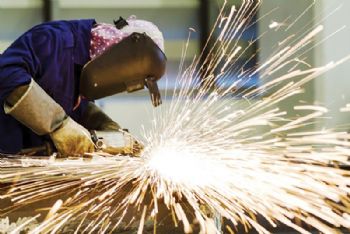
New research led by the University of Leicester’s Department of Engineering (
www.le.ac.uk) will optimise the arc welding and additive-manufacturing processes to provide a cost-effective way to create large metal parts with improved properties.
The research — recently published in Nature Communications — explores the internal-flow behaviour in metal additive manufacturing and arc welding, which is the most widely used welding process in manufacturing.
The research team inserted small tungsten and tantalum particles into the melt pools created during the welding process.
Due to their high melting points, the particles remained solid long enough for them to be tracked, using intense beams of X-rays generated by the synchrotron particle accelerator at Diamond Light Source (the UK’s national facility for synchrotron light).
High-speed imaging at thousands of frames per sec showed how surface tension affects the shape of the welding melt pool, plus its speed and patterns of flow.
The results showed for the first time that the behaviour of the melt flow is similar to that previously seen via computer simulations — and that arc welding can be optimised by controlling the flow of the melt pool and hanging the associated active elements on the surface.
Professor Dong at the University of Leicester said: “Understanding what happens to the liquid in melt pools during welding and metal-based additive manufacturing remains a challenge.
"These findings will help us to design and optimise the welding and additive-manufacturing processes to make components with improved properties at a reduced cost.
"Welding is the most economical and effective way to join metals permanently, and it is a vital component of our manufacturing economy.”